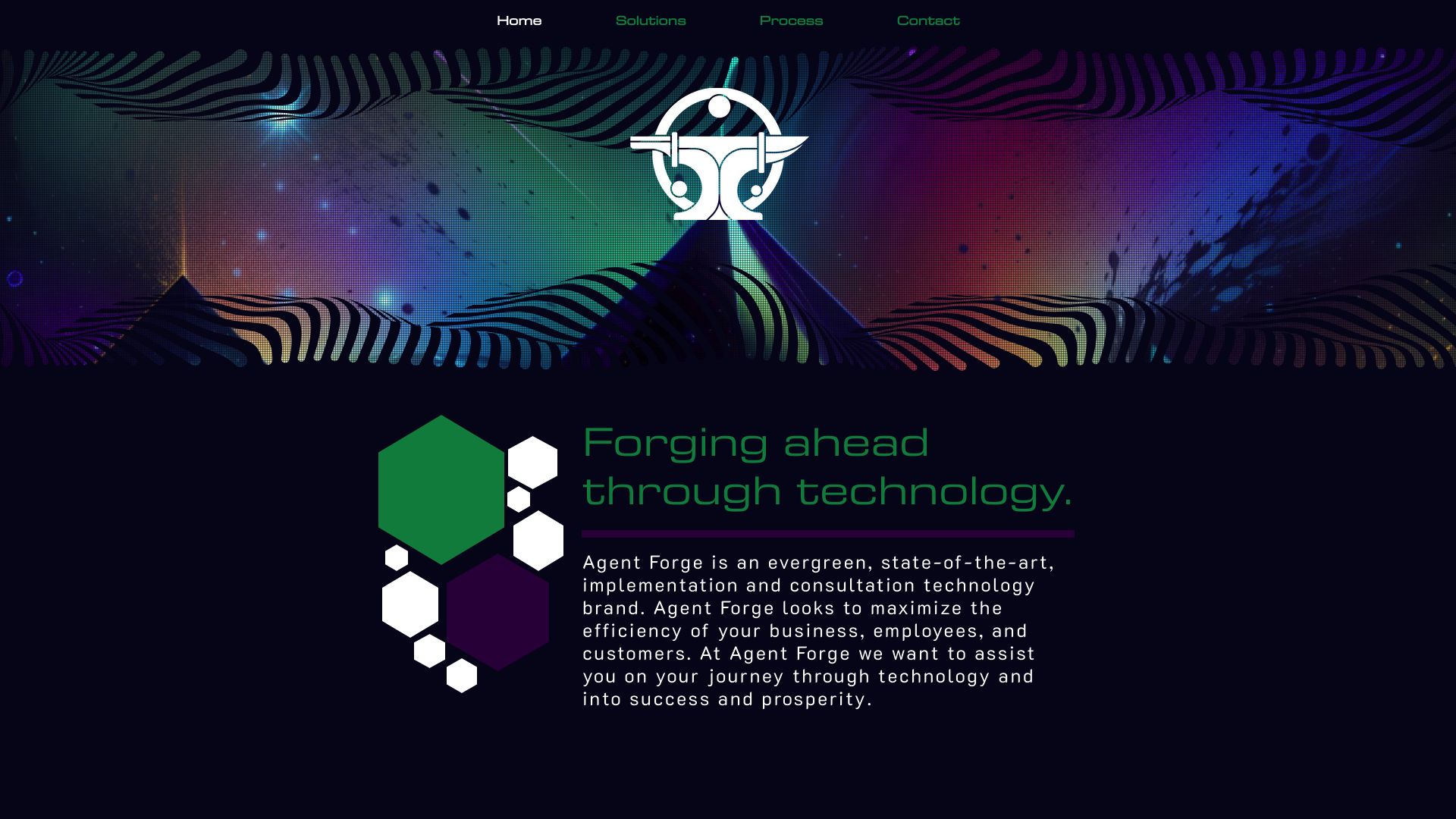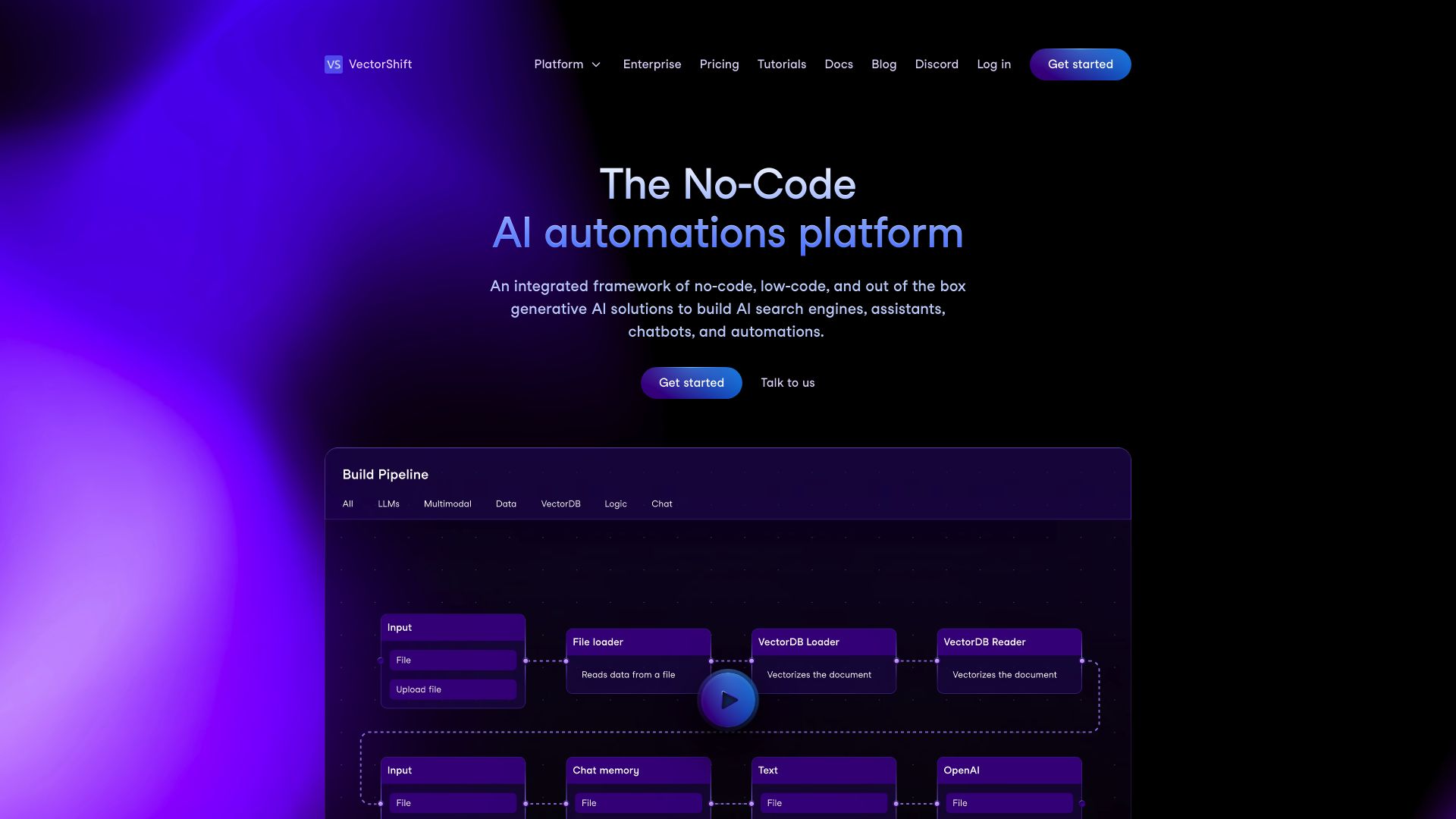Agent Forge vs. VectorShift: Comparing AI Development Platforms
AI agent development platforms promise to revolutionize how businesses automate tasks and create intelligent solutions. This comparison explores Agent Forge vs. VectorShift, and SmythOS — three powerful contenders in the AI agent space.
We’ll examine their core capabilities, ease of use, and suitability for different user groups. Whether you’re a seasoned developer or a business leader exploring AI, this analysis will help you navigate the landscape and choose the platform that best fits your needs. From no-code builders to advanced APIs, deployment options to data management, we’ll cover the key features that set these platforms apart.
Agent Forge Overview
Agent Forge empowers developers to build autonomous AI agents and cognitive architectures. This open-source Python framework provides tools for rapidly developing, testing, and iterating on agents that automate tasks and workflows.


Agent Forge supports major language models like Claude, GPT, and self-hosted options via Oobabooga. Its flexible agent memory management utilizes ChromaDB, while modules orchestrate multi-agent scripts and complex workflows. The framework includes pre-built agent templates, a prompt engineering system, and easy integration of custom data sources and third-party APIs.
Agent Forge supports major language models like Claude, GPT, and self-hosted options via Oobabooga. Its flexible agent memory management utilizes ChromaDB…
Developers leverage Agent Forge to prototype AI assistants, chatbots, and expert systems. The platform excels at task automation, enhancing productivity, and building conversational interfaces. Business users find value in automating workflows and developing intelligent process automation bots.
While Agent Forge offers powerful capabilities, it lacks certain features found in more comprehensive platforms. The framework doesn’t include a visual builder or no-code editor, which may limit accessibility for non-technical users. Additionally, there’s no mention of specific debugging tools, multimodal support, or features for explainability and transparency.
Agent Forge’s modular and extensible nature makes it well-suited as a foundation for long-term AI projects. The framework’s support for multi-agent collaboration and integration with various APIs enhances its versatility. However, users should be prepared for a more code-centric approach compared to some alternative platforms in the market.
VectorShift Overview
VectorShift empowers users to create and manage AI workflows through a versatile platform accessible via no-code and code SDK interfaces. The platform caters to both technical and non-technical users, offering a comprehensive solution for designing, prototyping, building, deploying, and managing generative AI workflows and automations.
At the core of VectorShift’s offering is the pipeline dashboard, allowing users to craft AI workflows from scratch or leverage pre-built templates. This feature streamlines the deployment process, making it efficient and straightforward for users across various skill levels. The platform’s flexibility shines through its support for diverse use cases, including chatbots, search functionalities, automations, and content creation.
VectorShift excels in automation capabilities, enabling end-to-end workflow automation, scheduled executions, and trigger-based actions. The platform seamlessly integrates with numerous data sources such as Google Drive, Slack, OneDrive, and Airtable, facilitating centralized data management and real-time synchronization across applications. This integration prowess extends to advanced content creation, allowing users to generate marketing copy, personalized emails, call summaries, proposals, and graphics at scale in predefined formats and styles.
VectorShift empowers users to create and manage AI workflows through a versatile platform accessible via no-code and code SDK interfaces… offering a comprehensive solution for designing, prototyping, building, deploying, and managing generative AI workflows and automations.


The platform’s knowledge base feature centralizes data and performs semantic searches, enhancing the AI’s ability to provide accurate and relevant information. VectorShift offers deployment flexibility, allowing pipelines to be deployed as chatbots, automations, or search functions. Users can customize and export these deployments in various formats, including URL, iFrame, WhatsApp/SMS bots, API endpoints, and Slack App bots.
While VectorShift provides a robust set of features, it’s worth noting that the platform may have limitations in areas such as multimodal support, debug mode, and certain specialized features like sitemap crawlers or YouTube transcript crawlers. Additionally, while the platform offers OAuth support for certain integrations, details on comprehensive data encryption and IP control features are not explicitly mentioned in the available information.
Feature Comparison
SmythOS provides a robust visual builder and no-code editor, empowering users of all technical backgrounds to create AI agents effortlessly. In contrast, Agent Forge requires coding skills, limiting accessibility for non-developers. VectorShift offers a middle ground with both no-code and code SDK interfaces.
While Agent Forge excels in supporting multi-agent collaboration and integration with various APIs, it lacks SmythOS’s comprehensive debugging tools and multimodal capabilities. VectorShift offers strong automation features but falls short in areas like constrained alignment and IP control that SmythOS handles adeptly.
SmythOS’s hosted vector database and support for diverse file types outshine both competitors in data management. Neither Agent Forge nor VectorShift match SmythOS’s range of deployment options, including API, webhook, and scheduled agent functionalities, giving SmythOS a clear edge in versatility and scalability for enterprise-level AI solutions.
| Agent Forge | VectorShift | SmythOS | |
|---|---|---|---|
| CORE FEATURES | |||
| Hosted Agents (Dev, Production) | ✅ | ❌ | ✅ |
| Environments (Dev, Production) | ✅ | ❌ | ✅ |
| Visual Builder | ❌ | ✅ | ✅ |
| No-Code Options | ❌ | ✅ | ✅ |
| Autonomous Agents | ✅ | ❌ | ✅ |
| Explainability & Transparency | ❌ | ❌ | ✅ |
| Debug Tools | ❌ | ❌ | ✅ |
| Multimodal | ❌ | ✅ | ✅ |
| Multi-Agent Collaboration | ✅ | ❌ | ✅ |
| Audit Logs for Analytics | ❌ | ❌ | ✅ |
| Work as Team | ❌ | ✅ | ✅ |
| Bulk Work | ❌ | ✅ | ✅ |
| Agent Work Scheduler | ❌ | ✅ | ✅ |
| Logs & Monitoring | ❌ | ✅ | ✅ |
| SECURITY | |||
| Constrained Alignment | ❌ | ❌ | ✅ |
| Data Encryption | ❌ | ❌ | ✅ |
| OAuth | ❌ | ✅ | ✅ |
| IP Control | ❌ | ❌ | ✅ |
| COMPONENTS | |||
| Foundation AIs | ❌ | ✅ | ✅ |
| Huggingface AIs | ❌ | ❌ | ✅ |
| Zapier APIs | ❌ | ❌ | ✅ |
| All other APIs, RPA | ❌ | ✅ | ✅ |
| Classifiers | ❌ | ❌ | ✅ |
| Logic | ❌ | ✅ | ✅ |
| Data Lakes | ❌ | ❌ | ✅ |
| DEPLOYMENT OPTIONS (EMBODIMENTS) | |||
| Deploy as API | ❌ | ✅ | ✅ |
| Deploy as Webhook | ❌ | ✅ | ✅ |
| Staging Domains | ❌ | ❌ | ✅ |
| Production Domains | ❌ | ❌ | ✅ |
| API Authentication (OAuth + Key) | ❌ | ✅ | ✅ |
| Deploy as Site Chat | ❌ | ✅ | ✅ |
| Deploy as Scheduled Agent | ❌ | ✅ | ✅ |
| Deploy as GPT | ❌ | ❌ | ✅ |
| Scalability | ❌ | ✅ | ✅ |
| DATA LAKE SUPPORT | |||
| Hosted Vector Database | ❌ | ✅ | ✅ |
| Sitemap Crawler | ❌ | ❌ | ✅ |
| YouTube Transcript Crawler | ❌ | ✅ | ✅ |
| URL Crawler | ❌ | ✅ | ✅ |
| Word File Support | ❌ | ✅ | ✅ |
Best Alternative to Agent Forge and VectorShift
SmythOS stands out as the superior alternative to Agent Forge and VectorShift for AI agent development and deployment. Our platform offers unparalleled ease of use, an extensive feature set, and unlimited use cases, making it the ideal choice for businesses and developers seeking a comprehensive AI solution.
Our intuitive drag-and-drop interface empowers users of all technical backgrounds to create sophisticated AI agents without extensive coding knowledge. This visual approach, combined with our extensive library of pre-built components and templates, accelerates development and reduces time-to-market for AI projects.
SmythOS stands out as the superior alternative to Agent Forge and VectorShift for AI agent development and deployment. Our platform offers unparalleled ease of use, an extensive feature set, and unlimited use cases…
Unlike Agent Forge’s code-heavy approach or VectorShift’s limited deployment options, SmythOS provides a wealth of deployment possibilities. We support API, webhook, scheduled agent, and GPT deployments, ensuring your AI solutions integrate seamlessly into existing workflows. Our platform’s scalability and robust hosting capabilities outshine both competitors, making SmythOS the clear choice for enterprise-level AI implementations.
SmythOS excels in data management and security, areas where both Agent Forge and VectorShift fall short. Our hosted vector database, support for diverse file types, and advanced security features like data encryption and OAuth integration provide a secure and versatile foundation for AI development. These capabilities, combined with our multimodal support and advanced debugging tools, give SmythOS a significant edge in creating and managing complex AI ecosystems.
By choosing SmythOS, you’re not just selecting a tool – you’re embracing a future-proof AI platform that continuously evolves to meet the changing demands of the AI landscape. Our commitment to innovation, user-friendly design, and comprehensive support ensures that your AI initiatives will thrive, regardless of scale or complexity.
Conclusion
SmythOS emerges as the superior choice for AI agent development and deployment. While Agent Forge offers powerful capabilities for developers and VectorShift provides a balance of no-code and code interfaces, SmythOS excels in versatility, ease of use, and enterprise-ready features.
SmythOS’s visual builder and no-code editor democratize AI development, allowing users of all technical backgrounds to create sophisticated agents. Its comprehensive debugging tools, multimodal support, and advanced deployment options surpass both competitors. The platform’s hosted vector database, support for diverse file types, and extensive integration ecosystem (300,000+ integrations) provide unmatched flexibility for data management and workflow automation.
For businesses seeking a scalable, secure, and feature-rich AI platform, SmythOS stands out. Its constrained alignment capabilities, data encryption, and IP control features address critical enterprise concerns. While Agent Forge and VectorShift may suit specific use cases, SmythOS’s all-encompassing approach makes it the ideal choice for organizations looking to leverage AI across multiple domains.
Ready to experience the future of AI agent development? Create a free SmythOS account today and start building powerful AI solutions with our intuitive platform. Explore our extensive documentation to unlock the full potential of SmythOS and revolutionize your workflow with AI-powered automation.
Last updated:
Disclaimer: The information presented in this article is for general informational purposes only and is provided as is. While we strive to keep the content up-to-date and accurate, we make no representations or warranties of any kind, express or implied, about the completeness, accuracy, reliability, suitability, or availability of the information contained in this article.
Any reliance you place on such information is strictly at your own risk. We reserve the right to make additions, deletions, or modifications to the contents of this article at any time without prior notice.
In no event will we be liable for any loss or damage including without limitation, indirect or consequential loss or damage, or any loss or damage whatsoever arising from loss of data, profits, or any other loss not specified herein arising out of, or in connection with, the use of this article.
Despite our best efforts, this article may contain oversights, errors, or omissions. If you notice any inaccuracies or have concerns about the content, please report them through our content feedback form. Your input helps us maintain the quality and reliability of our information.
